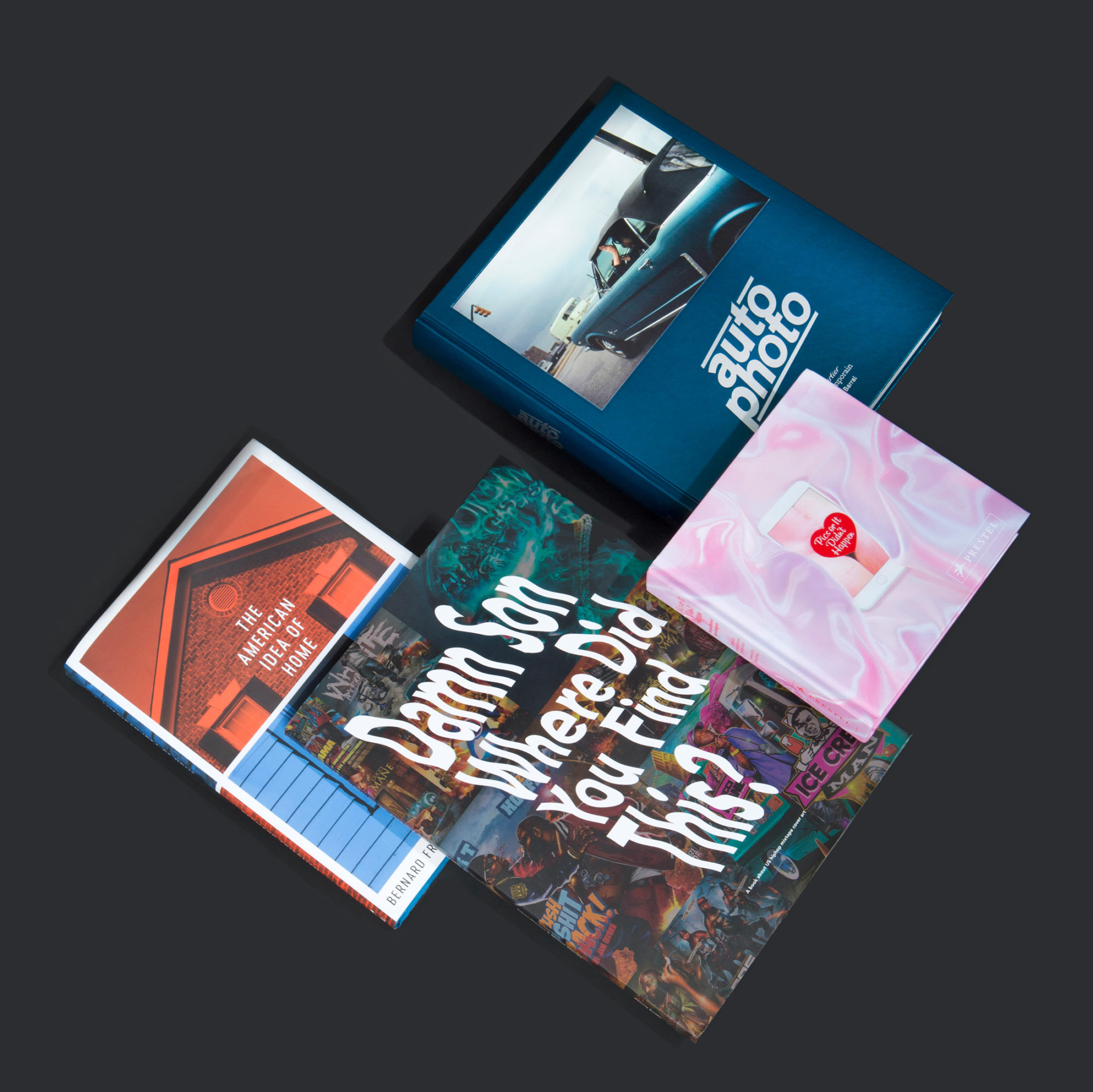“There is no place like home because home is not actually a place.” So writes columnist Meghan Daum in the introduction to Bernard Friedman’s The American Idea of Home (University of Texas Press). Indeed, with the concept of “home” too slippery to pin down, Friedman opts avoids a thesis-driven essay, and instead presents his subject through a compendium of interviews with a group of eminent architectural minds. Thom Mayne, Toshiko Mori, Richard Meier, and others attempt to parse the deeper meaning of the American home, often presenting competing theories. As Mayne says, “It’s a question of, Is my reality more relevant than your reality?”
Autophoto (Fondation Cartier pour l’art contemporain/Éditions Xavier Barral), on the other hand, chooses to explore its subject visually. The tome presents the automobile as seen through the lenses of the world’s most renowned photographers. From William Eggleston’s iconic, chromatic images of midcentury American life to Daido Moriyama’s grainy, black-and-white views of Japan, the car proves to be a ubiquitous, inescapable muse.
As tech companies publicly wrestle with their regulatory policies, users often bear the brunt of inconsistent censorship practices, as Pics or it Didn’t Happen (Prestel) illustrates. The book presents 270 images censored by Instagram, collected by artists Arvida Bystrom and Molly Soda. Content ranges from menstruation and sexual encounters to nude selfies and racy texts. Taken together, these photos aptly capture contemporary culture’s complex, idiosyncratic views of sexuality and the human body. But before diving in to the taboo visuals, the book offers a foreword by Chris Kraus, author of the novel I Love Dick, to frame what she calls the banned content’s “attempts to break through the screen by using the screen.”
Hip-hop artists may have more agency than the average Instagram user, but some ideas are still too risky to weave into an album. Hence the mixtape, in which generations of rappers have found a safe space for experimentation, free from interference from a music label. These transgressive tunes begat an equally out-of-the-box approach to cover art, which revels in appropriation, nostalgia, and absurdity. Damn Son Where Did You Find This? (Koenig Books) samples work from the niche’s leading designers, who’ve dreamed up images for everyone from Kanye West and A$AP Rocky to Tupac and Lil Wayne.
